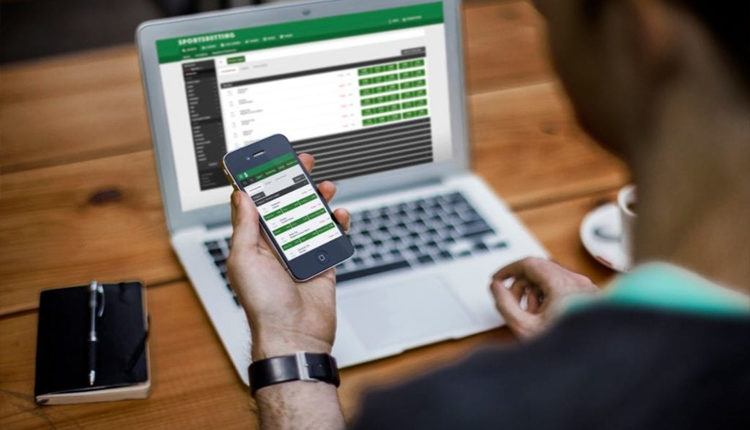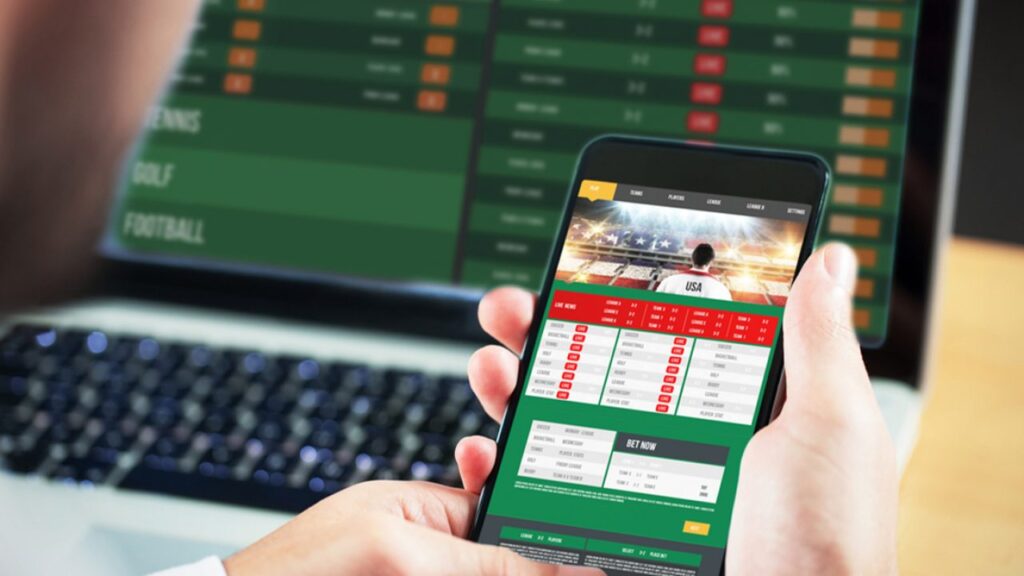
Comparing the Risks of Bets With the Same Odds
As a meme from the noughties said: not all yogurts are equally good. If we draw parallels in betting, we can say that not all bets are equally good and worth flirting with. And it’s not even about comparing terms for different odds. Everything is clear here, different odds estimates, which is not the right way to compare, especially the bigger is the difference in odds. But we have to state that even betting for the same odds often turns out to be far from equal. Probably this idea will be disputable for many people, but we not only justify our position, but also develop this idea. This review will be devoted to the comparison of a number of typical bets with the same odds, but with different risks and remote chances of winning. The topic is extremely topical. Every day a lot of bettors break their heads over the question of what to bet. The choice is really wide and often not the best decisions are made, just because of the lack of understanding the difference between betting on close odds. We will remedy this situation by clarifying through examples.
Modern betting covers a lot of sports, but you can not say that the disciplines are too different in terms of the arrangement of the line on them in the bookmaker’s office. Everywhere the set of bets is about the same. The range of betting on the main outcomes cover the bids on the sides’ wins, and, in fact, the entire line of forwards, which somewhere may be written in different forms, from which the essence does not change. The objects of these handicaps are numerical scores on goals, pucks, points, sets, games, cards, rounds. Only these objects change between sports, but the idea of betting on the score difference, the advantage, remains valid everywhere. The second big block is totals, the sums of the same numerical indicators: goals, pucks, rounds, and so on.
There are general totals, individual totals, a lot of combined bets on their basis, but everything revolves around these amounts. And the third big block of bets is so-called smolmarkets, betting on different additional statistics. It is somewhere corners, offsides, fouls, yellow cards, two-minute removals, blocked shots, rebounds, taken away players’ serves, and so on. Even though there is a wide variety of bets on the Smolmarkets, with seemingly different substance, they still have common approaches to prediction, mostly statistical. Our point is that understanding the principles of comparing bets within one sport is not difficult to transfer to any other discipline, since the ideas here are common. So we will be giving examples from soccer, as the most popular sport for betting today. If you’re not a soccer bettor, it’s still not hard to figure out which markets in your niche are close in logic to one or another soccer betting. This will enable you to use the observations we’ve given you in absolutely any sport.
In sports betting there are many strategies, algorithms for the game. Part of these algorithms regulates the rules of bank management. They are commonly referred to as financial strategies. Another subsection of the algorithms sets the rules for selecting matches, teams, specific types of bets in certain scenarios. These schemes are called differently, either also strategies, but already game, or game models. The important point is that both strategies regulate the ranges of odds that are acceptable to use within their framework. The whole range of quotes can be divided into three large groups each of which should be considered separately. Small ratios, from 1.10-1.20 to 1.49. Medium – from 1.50 to 1.80-1.89. High – from 1.90 to 2.50-3.00, rarely higher.
Small quotes are usually used to collect expresses or lesions of different size, from small, in 2-3 elements, to larger ones. The medium ones are usually used for the separate bets by the even strategies like flat. Rarely are they used in the same scales. Large quotes are suitable for playing with even strategies and in progressive algorithms. The latter imply schemes where the amount of bets increase according to some rule, on a series of consecutive losses, until the winning move to cover the past losses. Here we will look at examples in these intervals.
SMALL ODDS

So, let’s take for example the odds of 1.25, the average for this range, and see what kinds of bets can be played for this value in different matches.
It could be:
- Just a win for one of the teams, P1 clear favorite playing at home.
- A handicap of -1.5 on an even more obvious favorite.
- A handicap of zero or double odds on a relative favorite.
- Handicap +1.5 or +2 on a relative underdog.
- Total betting total more than 1.5 in a match where TB(2.5) seems more probable than TM.
- Goal of a particular team, ITB(0.5) or ITB(1), either a relative favorite away or a midfielder in a close match at home.
- A yellow card total of more than 1.5 or 2.
- A team win plus TB(2.5) – no.
Let’s compare the first two cases. In both of them we have the favorite, and the victory in one case is calculated for 1.25, and in the other one – 1.10 or even less, since the quoted price is also 1.25 for such a considerable premium. Experience suggests that any team can lose points, no matter how much the crowd and the bookmaker believe in it. Consequently, the second bet is more dangerous, as it conflicts with the main motivation. In most cases we are dealing with championship games, or some group tournaments, where 3 points are given to the teams, regardless of the winning score. That means that 1-0 and 5-0 are evaluated equally. Hence, just for a win the favorite will definitely rip, but for a difference of 2 or more goals, not so. So we conclude that with nominally equal odds and kind of equal mathematical chances it is of course safer for the bettor to choose the first option, to play for a simple win.
If we compare a bet on a clear victory of the clear favorite with the result in the form of zero handicaps or double odds relative favorite, we see the advantages of the second option. There is a certain odds advantage for the not too obvious favorite, but at equal odds these bets give protection in case of a draw. In one variant, with a zero handicap, there is a refund, a saving, and in the other, with a double chance – a full-fledged win. Betting on a clean win covers only one of the three possible outcomes, which, of course, is much worse and more dangerous for the player.

Let’s go further and compare the option of plus handicaps on the relative underdog with the already mentioned types of betting. It would seem that here we generally cover all three possible outcomes, only with the limitation of the score gap. That is, this bet suits, and the victory of the underdog, and a draw, and the minimum defeat. If there is a grounded prediction that there should not be a rout, it seems like a good option. However, we run into a problem with the financial aspect. In order to play on small odds, as noted earlier, you must use either expresses or staircases. Simply flirting with odds from that range in an even pattern is counterproductive over the distance. So you have to combine plus odds with other conditions, from other matches. This is certainly not a good thing when dealing on the underdog side. One of the bettor’s wisdom on the matter is: if you need a parlay, pick favorites, if you’re drawn against an underdog, take an order. There may be exceptions, but they are rare, and you shouldn’t include such outcomes in more than a single.
Very popular among the mass player is such a bet as a total of more than 2.5 in a match. But we will get to this classic later. Here let’s compare the option for a modest odds, TB(1.5) in a match, with other types of bets. So, when in the pre-match line they take TB(1.5) for odds about 1.25, they obviously insure. They are ready to decrease the quotes but increase the chances of winning to the maximum. If we compare with the previously mentioned betting odds on clear favorites’ wins or handicaps, then TB(1.5), or even TB(2) looks in a much better light. Firstly, there is no victory without goals. If we are talking about a sure win for the stronger side, then surely there should be 2 goals, even without the participation of the underdog in this amount of effort. So in many games, where bettors are drawn to play for wins or handicaps, it would be wise to look towards the total totals. Secondly, the total total is good because it is a neutral bet. Especially this one, up to 1.5-2, with reinsurance. Force majeure may occur, for example, the favorite will be completely out of shape, or will receive an early suspension, injury of a key performer. Then the score might turn out to be, say, 0-2. It would be a failure of all “popano” expectations, but a neutral total would be scored anyway. We should take advantage of it, to insure ourselves if possible. Better than betting on a moderate total over, may be only catching it in play for a larger odds, but we’ll mention that. If the score is 0:0, even if catching such a TB at least for 1.50 or higher, but not for 1.25. This is usually the lot of pre-match bets when it is feared that the goals will start flying in the first 10-15 minutes, it will not be possible to raise the rates and the chance to win will be missed.
Similarly, the side more can be played on the TM with a good margin, for example, TM(4), TM(3.5), TM(3). If you understand the search for such “draw” games, it is also a great option, including for mini-extras. The main thing is that there is an understanding of how drawn-out and inactive the match will be, and a serious reserve on the total acting as insurance.

A team goal, an individual total greater than 0.5 or 1 is an example of a bet on the simplest condition. Simpler can be only betting on the total TB(1) in the match, but there 1.25 can be caught only in play. In the pre-match quotes will be lower. So it is the choice of a particular side that will score a goal that allows you to achieve an acceptable figure. Always in a match where goals are expected, a certain team is expected to score first. It does not happen that the odds are absolutely equal. If there is such a feeling, it is akin to an uncertainty of goals more. Therefore, it is not difficult to determine with this limitation, whose goal to catch. So the complication of conditions is minimal. In comparison to victories the betting on ITB from 0.5 or 1 is very good, since the goal does not oblige to anything. This bet detaches the bettor from the main outcome of the match. The selected team, even if it was a relative favorite before the match, can easily lose, draw or win. Betting on one goal is very reliable and understandable. In contrast to the bet on the total, we need only one goal here, albeit with the authorship. It’s a shame when it ends up 1-0 and a modest TB(1.5) fails. So the option of a modest ITB could be a good alternative. We need to weigh in each matchup which vector to choose. Maybe even divide the amount for both of these options.
Often a very good decision will be to walk away not only from the conditions on the main score, the result, but also on the goals. Then some bettors resort to betting on smolmarkets. For example, expect a rather rough match, and take with a good margin TB on yellow cards. In such games, a couple of cards are likely to be given easily, and well insured with a modest value of this total can provide yourself with an easy win. It is difficult to compare betting on yellow cards and other statistics with betting on outcomes and totals. They go in parallel, and in some cases are more appropriate than others. So this is an example of a good option when you need to play a small odds.
Often inexperienced bettors charge for combined bets, in the sort of combinations of win and total conditions, or something similar. But in addition to the “yes” option, which promises a fairly large odds, you can find the most absurd scenario, where, either the outcome is hardly going to score, or the total, and play for “no”. For such decisions also usually catch quotes around 1.20-1.30, that is, you can take the figure we need 1.25. In terms of complexity, this is a decision comparable to winning, since you need to catch a few conditions. This option will clearly be inferior in clarity, predictability and reliability to many of the previously mentioned bets: on double chance, total TB or TM with a margin, ITB(0.5).
AVERAGE ODDS

In the range of average odds, about 1.50-1.80, let’s compare the following bets:
- The victory of the relative favorite;
- Handicap (-1.5) of the clear favorite;
- Zero handicap of the relative or hidden favorites in an equal match;
- Plus handicap (+1) or (+1.5) on the relative outsider;
- General TB(2.5);
- ITB(1) on the underdog or the participant of the tied match;
- ITB(1.5) or ITB(2) on a favorite;
- ITB(2.5) on the clear favorite;
- Total more than 3.5 on yellow cards;
- Goal by a specific player;
- Combination: win plus TB(2.5) – yes.
A net win for an indicator in the above range, you would agree, is an extremely common decision. But how good is it? All of the disadvantages of such bets have already been pointed out – it is primarily working with one outcome out of three possible outcomes. Often the favorite, even a relative favorite, is simply assigned by the bookmakers, and such a bet runs at a deliberately lower odds than would be objective here. This promises a loss at a distance. In general, it may not be necessary to completely abandon such bets. They may be appropriate only when we are confident in the fairness of the evaluation. Practically in 90% of cases when something like that is considered, it is possible to find an option for the same figure with a much higher degree of reliability.
About the handicap (-1.5) for the odds in the range of 1.50-1.80 there is not much to say. It is a typical “popa” move when just a victory is priced very modestly, the player needs an acceptable figure, at least at the level of the same 1.50-1.60. Well and imagination is not enough for anything better than to play a forum. This is probably the worst solution possible. More absurd betting conditions can of course be found in the rich rosters of bookmaker’s offices, but they are usually priced in numbers much higher.
Advantages of zero handicaps is overlapping two outcomes out of three. Usually we have to deal with this bet for quotes up to 1.45-1.49, that is, below this range. However, there are situations where, in a match close to the estimated odds is still visible favorite. If so, the bettor is not mistaken in his estimates, a bet on the zero handicap will be optimal. First, given the layout of the probabilities, it is almost always a bluff, in an extreme case – an accurate estimate. Secondly, once the quote has crossed the psychological line of 1.50, it is possible to play as an order, not depending on other matches, which is of course positive from all sides. Thirdly, we have a draw, which is also worth a lot.

The situation with positive handicaps on relative outsiders is about the same as described above. If the forecast indicates a good chance of the nominal outsider not to lose, or lose a small loss, it can be used. I am especially glad that the odds are already acceptable for a single bet, you can not get involved in expresses and stairs. As pointed out above, that was the only big complaint about betting on plus handicaps of underdogs for quotes below 1.50. It’s not a massive option, but it’s fine to play that way on a spot basis.
Total match total over 2.5, in the pre-match line is the most popular bet, on par with the same odious wins. If the figure for TB(2.5) is in the above range, both bookmakers and, consequently, the crowd of everyday people believe in the “top” more than in the “bottom”. The problem with such a bet is twofold. To make such a bet to go, you need a coincidence of three elementary conditions – three goals, no matter who scores them. So if TB(1.5) in its essence is a mini-express double, albeit built within the same game, then TB(2.5) is already a triple, with all that implies. The second point is “overload”, which often accompanies such bets. The odds of a match may be really 50/50 on TM and TB from 2.5, but a bookmaker tips a noticeably lower odds on a TB. The “popup” crowd is spurred on by two triggers at once. First, the desire to watch beautiful goal soccer. Secondly, this low odds puts on TB, and even more loaded the line in this direction. Accordingly, at a distance it is strongly unprofitable decision. The degree of skewness from match to match can vary greatly, the more popular the event, the greater this gradient. In any case, a head-to-head bet on TB(2.5) before the match is rarely the best option. You can play more safe and bet at least on TB(2), even if it means cutting the odds. Perhaps, instead of total, catch individual totals. Or even move it all into play, where it is quite realistic to take the same odds of 1.50-1.80 for a TB (1.5) or TB(2).
It is not uncommon for matches where such a single-digit condition, such as ITB(1), is evaluated by high odds, higher than 1.50. As a rule, it is either the underdog side, or just a match between two teams close in level, which do not shine with their average performance. Nevertheless, such decisions can be very workable and carry a valley. For example, bookmakers often sin with the fact that they put quotes on goals, according to statistics, in the league average. This is precisely what leads to such high odds for such simple conditions. The player’s task is only to calculate matches where the chances of goal activity is higher than what the office expects. Accordingly, you get both an extremely safe bet and a good odds. In addition, it is also dependent on the main result. The selected side may also lose, and at least one goal will be a return. One of the best scenarios possible.

In games where you see a clearer favorite, bookmakers expect a lot of goals from a particular side, and the odds in this range are given for ITB(1.5) or even ITB(2). Indeed, since the team is scoring a lot, for 1.50 or higher, it makes sense to gamble on a couple of goals from it. There is an element of insurance in case of a goal exchange. For instance, a straightforward and favorite bet of beginners on the victory of a relative favorite will be lost if the score is 2:2, 3:3, 2:3, but an ITB will work. It is possible to consider this variant as intermediate by its riskiness and validity, between simpler bets with reinsurance, and frankly “popan” decisions on net wins, minus handicaps, combinations and so on.
A more radical solution would be to bet on ITB(2.5) or even more. If such values are given from 1.50 and no more than 1.80-1.89, then we are talking about a very obvious favorite. This, of course, should already be alarming, promising a fair amount of skewing and overloading. In general, if we can combine ITB(1.5) or ITB(2) with such a minimalistic score, like 2:0, then by going for a bigger total we strongly increase the risk of loosing. Here we are dealing with another trick, which is resorted to by not very reasonable players in an effort to increase the odds. So, ITB(2.5) is considered to be an outside method, as well as handicaps larger in value than (-1), and many combined bets.
On yellow cards or other smolmarkets you can also play for average odds. However, here you will have to catch 3-5 mustards. This is not a safe decision, especially in light of the fact that we are talking about pre-match betting. Since the bettor doesn’t see the beginning of the match and the fouls and roughness, it’s possible to get such a high value. So specifically on the smolmarkets, if you need to take the odds in the specified range, it is recommended to catch it in play, but 1-2 cards, or in the half, or at the end. This is much more reliable, although it seems that the quotes are the same. But in essence, as in all the examples in this piece – the identity of the numbers is deceptive.

A goal from a star player, the best scorer of the team is usually evaluated in the corresponding matches by odds of the order of 1.50-1.89, just in the range we are interested in now. This is an example of a bet on conditions where the possible outcomes are not 2-3, but 23, to be frank. That is, 22 players can score, or there will be no goals at all. Of course, exaggerated, because goalkeepers do not score often, but the main thing to understand the idea. If the stars give less than 1.90 for a player’s goal, then you can be sure that this is an underestimated offer in terms of probability. The bookie’s calculation here is clear, it is aimed at the “hype” around the corresponding performer. The fans of his talent will bet anyway and it does not matter if the event would be objectively worth a 2.00, or maybe even 2.50, they will buy it for 1.50-1.70. So this type of bet claims to be one of the worst in this selection. Such difficult to predict bets should be avoided in general, especially for such modest figures.
At the end of the block let’s talk about combined bets. When the victory of the favorite is combined with the condition on the total total more, or other similar combinations, the situation is not much different from several previously described. It is simply an attempt to pass from a small odds for a team victory to an acceptable size for an order. As a result – increased risks, with still a modest, and often overloaded indicator. One of the worst decisions. The same order of quotations is painlessly, with appreciably greater reasonableness and lower risks, caught by other types of betting, maybe even within the same game, or in the next one. The question is, why bother with such a big garden, creating new entities? After all, you can not trigger yourself on a particular match, and pick up in another bet for the same indicator, but much more reliable and understandable.
HIGH ODDS

For odds of 1.90-2.20 or slightly higher, up to 3.00, you can consider such bets:
- A win for one side in a close match;
- Handicap (-1) on a relative favorite;
- ITB(1.5) or ITB(2);
- Total TB(3);
- Total TM(2);
- Even or Odd;
- More than 1.5 goals from a specific player;
- Penalty or Send-off.
Everything has already been said about net wins. Especially if the figure under two or higher – it is a lottery. You need to be sure of a good probability advantage, as well as a conscious idea of how you are going to translate that into your financial surplus over the distance, what strategy will be used. Otherwise, it’s a fanatical bet and guesswork. If you’ve got one of the sides in such a close match, it’s better to cut back and play a zero handicap.
We have had a good run at handicaps (-1.5) and more. So here we’ll cut back a little bit on the value, and remember the option (-1). This condition for the quotation from 1.90 can be played in matches of relative favorites, where we used to take just for the victory about 1.50. In general, due to the kinship, this bet carries all the mentioned disadvantages of betting on a clean win. However, if we compare it with (-1.5), the degree of absurdity drops a bit. At least it is possible to get a return if the win turns out to be the minimum. Since this bet is not so radically conflicts with the main motivation of the teams, the point can be played, if there is confidence that the whole selected side is evaluated fairly, without overshooting.
Also large odds, under or over a deuce, can be played on the individual total of the relative favorite greater than 1.5 or 2. That’s not a bad decision. Yes, it is more reasonable to divide the bet and for a part of the amount to catch already ITB(1) in play, but in general – a working option.

The total more for the figure above two usually means that the value, from which the countdown is taken, will be 2.75 or 3. If this value is given even for the classic 2.5, it is better not to be greedy and squeeze down to the value of 2. However, it all depends on the strategy. If it is a progressive algorithm that dictates the need for high quotes, then there are no options. The decision is debatable, we have already discussed the high total before the match. Thanks to the “upside”, if you understand what you are betting on, you can get out in the black. But as a rule, if there are much more humane and simple solutions that can be played for the same order of odds.
It’s the same situation with the smaller side. Bettors that specialize in “grassroots” games often hold a catch-up on the TM. For the odds to be acceptable for a progressive strategy, it is better to take TM(2), at most TM(2.25). This is the same verdict as in the paragraph above. If you understand forecasting and selecting matches under this condition you can go in the plus side by means of overtaking. By evenhanded methods, hardly. In the latter case, you need to flexibly vary the decision: somewhere to take the classic, TM(2.5), somewhere a radical ТМ(2), and somewhere borderline – ТМ(2.25).
For an indicator of 1.90 or higher, in soccer you can bet on an even or odd number of goals in the match. The bet, as well as the odds are 50/50, pure guesswork. This type of betting is bad in that almost the outcome is not predicted by methods of sports analysis. Yes, some people play on these markets according to progressive strategies, but it’s more of a gambling story, far from serious professional betting. So we advise you not to mess around, and consider only those markets where you can get a meaningful probability advantage.

We’ve also already talked about personal goals by specific players. It is funny, though, that the line not only allows you to see bets for more than 0.5 from a player, but even for 1.5, and somewhere even for 2.5. Accordingly, bookmakers directly buy “popan” to play this wild decision. They say everyone is at 0.5, but they even give 1.5 and even higher variants for this “hottie”. In general, we have to avoid that. Although the odds are for a two, but with a fair approach there should be a four.
Also in this range you can bet, for example, on the condition that the match will be one of the strict disciplinary penalties: a penalty or suspension. Yes, such games are readable. If tough referees, matches between some teams a priori promise a large number of fouls, roughness, cards. So it’s possible to play for that. Another thing is the score, the odds. Two or a little higher is probably not enough. If you’re going to try it, then only with a longshot, calculating your bank for a decent number of moves. In general, such an exotic bet obviously does not belong to the good solutions, but there are worse ones.
source: BookmakerAdvisor.com
